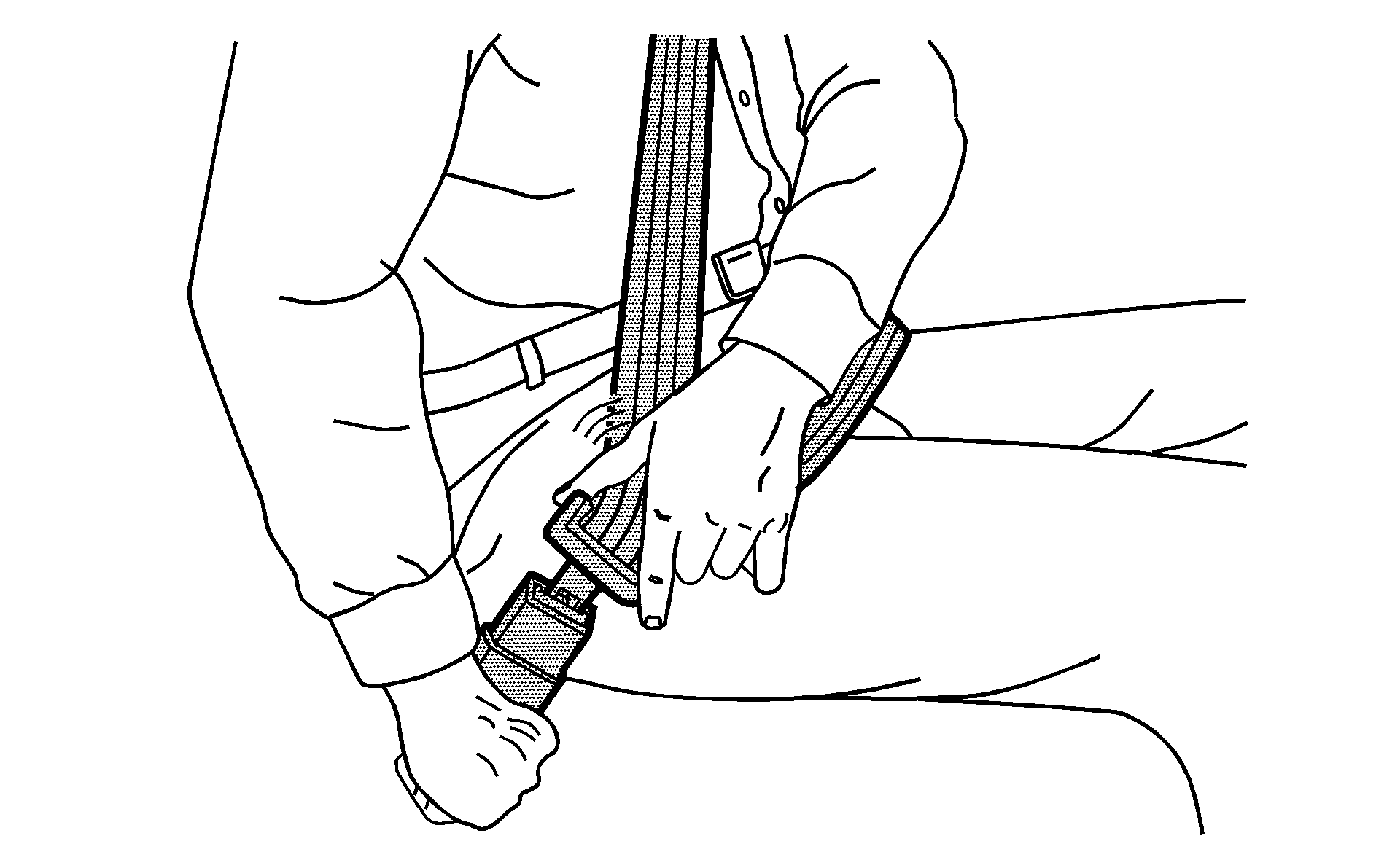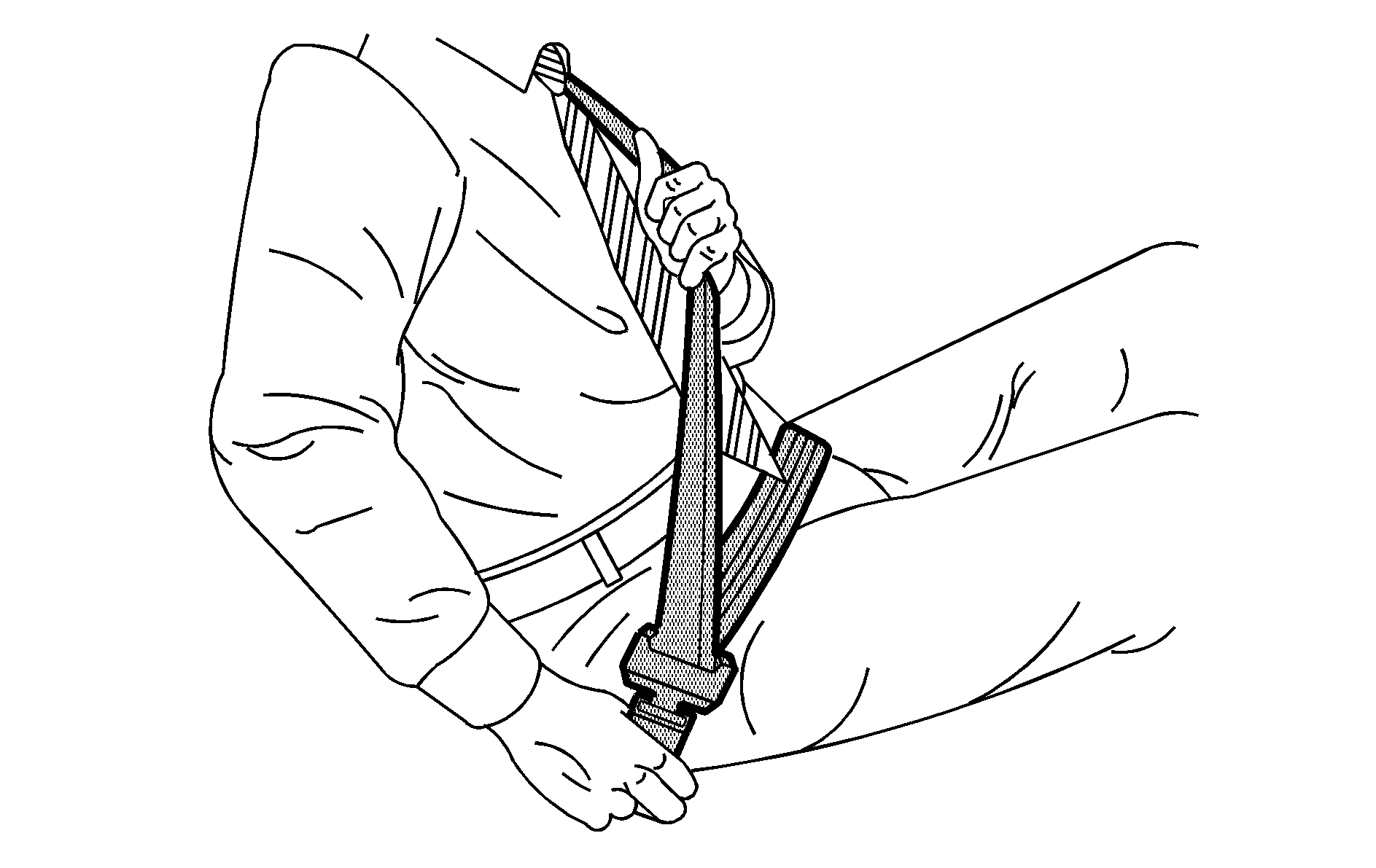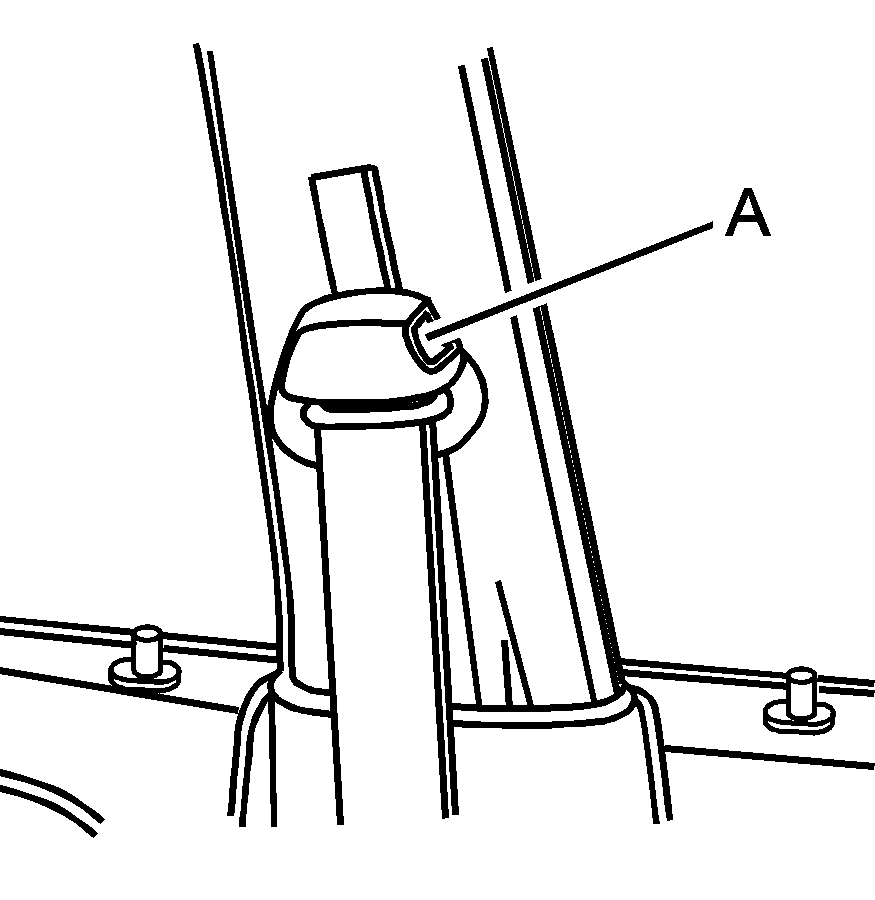All seating positions in your vehicle have a lap-shoulder belt.
If you are using a rear seating position with a detachable safety belt and the safety belt is not attached, see Rear Seat Operation for instruction on reconnecting the safety belt to the mini-buckle.
Here is how to wear a lap-shoulder belt properly.
- Adjust the seat, if the seat is adjustable, so you can sit up straight. To see how, see "Seats" in the Index.
- Pick up the latch plate and pull the belt across you. Do not let it get twisted.
- Push the latch plate into the buckle until it clicks.
- Pull up on the latch plate to make sure it is secure. If the belt is not long enough, see Safety Belt Extender .
- If equipped with a shoulder belt height adjuster, move it to the height that is right for you. Improper shoulder belt height adjustment could reduce the effectiveness of the safety belt in a crash. See "Shoulder Belt Height Adjustment" later in this section.
- To make the lap part tight, pull up on the shoulder belt.
The lap-shoulder belt may lock if you pull the belt across you very quickly. If this happens, let the belt go back slightly to unlock it. Then pull the belt across you more slowly.
If you ever pull the shoulder portion of a passenger belt out all the way, you may engage the child restraint locking feature. If this happens, just let the belt go back all the way and start again.

If you find that the latch plate will not go fully into the buckle, see if you are using the correct buckle.
Make sure the release button on the buckle is positioned so you would be able to unbuckle the safety belt quickly if necessary.

It may be necessary to pull stitching on the safety belt through the latch plate to fully tighten the lap belt on smaller occupants.

To unlatch the belt, push the button on the buckle. The belt should go back out of the way.
Before you close a door, be sure the belt is out of the way. If you slam the door on it, you can damage both the belt and your vehicle.
Shoulder Belt Height Adjuster
Your vehicle has a shoulder belt height adjuster for the driver and right front passenger.
Adjust the height so that the shoulder portion of the belt is centered on your shoulder. The belt should be away from your face and neck, but not falling off your shoulder. Improper shoulder belt height adjustment could reduce the effectiveness of the safety belt in a crash.

To move it down, press the release button (A) and move the height adjuster to the desired position.
After you move the height adjuster to where you want it, try to move it down without pressing the release button to make sure it has locked into position.
Safety Belt Pretensioners
Your vehicle has safety belt pretensioners for front outboard occupants. Although you cannot see them, they are part of the safety belt assembly. They can help tighten the safety belts during the early stages of a moderate to severe frontal or near frontal crash if the threshold conditions for pretensioner activation are met.
Pretensioners work only once. If they activate in a crash, you will need to get new ones, and probably other new parts for your safety belt system. See Replacing Restraint System Parts After a Crash .
